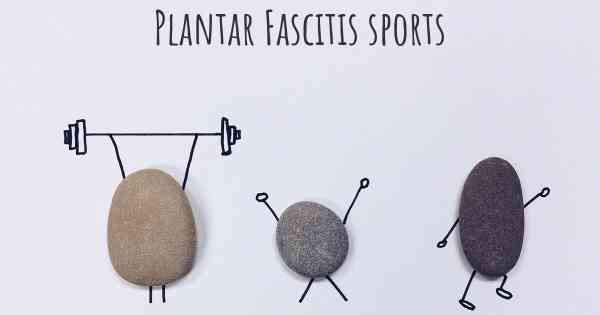Is it advisable to do exercise when affected by Plantar Fascitis? Which activities would you suggest and how intense should they be?
See if it is advisable for people with Plantar Fascitis to practice sports and which ones are the most recommended if you have Plantar Fascitis

Exercising with Plantar Fasciitis: What You Need to Know
Plantar fasciitis is a common condition that causes pain and inflammation in the heel and bottom of the foot. It occurs when the plantar fascia, a thick band of tissue that connects the heel bone to the toes, becomes strained or damaged. If you are affected by plantar fasciitis, you may be wondering if it is advisable to continue exercising and what activities would be suitable for you.
The Importance of Exercise
While it may seem counterintuitive, exercise can actually be beneficial for individuals with plantar fasciitis. Engaging in appropriate physical activity can help to strengthen the muscles and tissues in the foot, improve flexibility, and promote healing. However, it is crucial to choose the right exercises and modify them to avoid exacerbating the condition.
Suitable Activities
Low-impact exercises that do not put excessive strain on the feet are generally recommended for individuals with plantar fasciitis. Here are some activities that you may consider:
- Swimming: Swimming is an excellent choice as it provides a full-body workout without putting weight on the feet. The buoyancy of the water reduces the impact on the plantar fascia, making it a safe and effective exercise option.
- Cycling: Cycling is another low-impact exercise that can be beneficial for individuals with plantar fasciitis. It helps to improve cardiovascular fitness and leg strength without placing excessive stress on the feet.
- Elliptical training: Using an elliptical machine can provide a good cardiovascular workout while minimizing impact on the feet. Make sure to use proper form and avoid pushing off with your toes.
- Yoga and Pilates: These activities focus on stretching, strengthening, and improving flexibility, which can be beneficial for individuals with plantar fasciitis. However, it is important to avoid poses or exercises that put excessive strain on the feet, such as deep toe stretches.
- Strength training: Engaging in strength training exercises that target the muscles of the lower body, such as the calves and ankles, can help to support the plantar fascia. However, it is essential to use proper form and avoid exercises that cause pain or discomfort.
Intensity and Progression
When exercising with plantar fasciitis, it is crucial to start slowly and gradually increase the intensity and duration of your workouts. Begin with shorter sessions and lower intensity levels, and listen to your body. If you experience pain or discomfort, reduce the intensity or take a break. It is important to strike a balance between challenging yourself and avoiding overexertion.
Additional Considerations
While exercise can be beneficial, it is important to take additional measures to manage plantar fasciitis effectively:
- Proper footwear: Wear supportive shoes with good arch support and cushioning to reduce strain on the plantar fascia. Avoid flat shoes or those with worn-out soles.
- Stretching: Perform gentle stretching exercises for the calves, Achilles tendon, and plantar fascia to improve flexibility and reduce tightness.
- Ice and rest: Apply ice to the affected area for 15-20 minutes several times a day to reduce inflammation. Resting and avoiding activities that worsen the pain can also aid in the healing process.
- Orthotic devices: Consider using orthotic inserts or arch supports to provide additional support and cushioning to the feet.
Consult a Healthcare Professional
If you are unsure about which exercises are suitable for your condition or if you experience persistent or worsening pain, it is advisable to consult a healthcare professional. They can provide a proper diagnosis, recommend specific exercises or physical therapy, and offer personalized advice based on your individual needs.
Remember, everyone's condition is unique, and what works for one person may not work for another. It is essential to listen to your body, be patient with the healing process, and seek professional guidance when needed.








